University News
WIU Grad Student, Professor Explore Link Between H.S. Football and Disaster Recovery in NSF-Funded Study about Washington, IL
January 14, 2015
MACOMB, IL — As America celebrates the annual winter-time tradition of the end of another college football season and revels in the National Football League playoffs, if you asked, "What is the connection between weather and football?," you may hear the answers "snow," "cold," or even something specific like "Ice Bowl." But if you asked a resident of Washington, IL, that particular question, a highly possible reply would be "tornado."
For those in that community affected by an EF-4 tornado in late 2013, the high school football team's decision to play in a championship game the week following the disaster—after more than 1,000 homes were destroyed by the twister, 10 of which were players' homes—has left an indelible legacy for Washington's recovery. Evidence of that is detailed in a recent National Science Foundation and Natural Hazards Center Quick Response Program-funded study by Western Illinois University graduate student Nicholas Swope (Salem, OR) and co-author WIU Emergency Management Professor Jack Rozdilsky.
The quick-response research study (available at www.colorado.edu/hazards/research/qr/qr252/qr252.html), "High School Football as a Catalyst for Disaster Recovery: The Case of the November, 17, 2013, Washington, Illinois, Tornado," determined that the Washington High School Panthers' actions provided "a method of operation by which other high school football teams can consider ways to help their communities during future disasters."
The team's choice to play in that class 5A championship game against Springfield (IL)-based Sacred Heart Griffin in late November 2013 resonated widely with individuals, groups and the media alike. The Washington Panthers Coach Darrell Crouch, team and, subsequently, the community itself garnered national coverage by such news outlets as ESPN, the Weather Channel, the Chicago Tribune and attracted the ongoing attention of the NFL's Chicago Bears organization. And although, ultimately, the Panthers did not prevail against Sacred Heart Griffin, the team's decision stands as a remarkable catalyst—as asserted in Swope's and Rozdilsky's study—for accomplishment.
According to a Nov. 25, 2014, Associated Press article, Washington's "rebuilding rate is high and the community is even more tight-knit, according to a city official. [The] city has issued building permits for 80 percent of the 800 homes left uninhabitable after last November's storms, according to Washington City Administrator Tim Gleason."
It also seems to be a victory for all those who cherish the high school football traditions that play out under the Friday night lights on football fields all over the country.
Assistance and Opportunity
In the aftermath of the tornado disaster in late 2013, Rozdilsky—who has previously taken Western students to other post-disaster sites in Illinois to provide them with hands-on experience in their emergency management studies—and a few of his students made their way to Washington to assist and learn in the field.
One of Rozdilsky's students, and his research partner, Swope (who is studying public health in Western's health sciences department and is part of Western's Peace Corps Fellows Program [PCF] in Community Development) is the lead author on the NSF-funded study. The day of the storms, he contacted Rozdilsky—who he described as "two steps ahead of me"—about providing assistance in Washington.
"On the drive back, ideas were already beginning to percolate for a research study. We had a massive, all-day brainstorming session and came up with some interesting questions. Of those, the football and disaster recovery ideas were both intriguing and novel," he explained.
"Nick and I were part of the initial groups who went to Washington, but we had nothing to do with team's decision to play, of course. We were working on the emergency management side of things," Rozdilsky elaborated. "In previous disasters I've worked on in the Midwest, there are anecdotal stories about how high school football teams bring towns together in times of crisis, though I was not aware of any actual social science studies that attempt to show that. So Nick and I set out to explore specifically how that takes place and what types of services a team can provide to aid in a community's disaster recovery. By talking to the coaches, the team members, the opposing teams, Washington city officials and the Chicago Bears organization, we explored how the team's actions contributed tangibly and intangibly to the disaster recovery," he added.
Swope, who served in the Peace Corps in Mongolia, said his Peace Corps experience played a large role in his interest in this type of research, which he had a desire to pursue during his graduate program at Western.
"Or perhaps, the type of person who would participate in the Peace Corps would likely be comfortable doing this sort of investigation," Swope noted. "I knew I didn't want 'armchair research.' Spending the next year crunching numbers and looking up reports was not for me. I wanted to get on the ground and get to know the community, much like my Peace Corps experience."
Washington Strong
According to Rozdilsky, one of the main conclusions of the study is that the team, ultimately, became an important catalyst for Washington's recovery, as indicated in the research study's title.
"Beyond serving as role models, the team members served as ambassadors for the city. After the team played in the game, the media tied the decision to play and the whole event in with the 'Friday Night Lights' theme, in other words, 'the team lifting up the town.' Then, the next week the Chicago Bears came to town and spent time with the team and developed a relationship with the high school team. Over time, the Chicago Bears organization brought more than $210,000 to the community," Rozdilsky said. "We can draw a direct relationship between the Bears' management's community outreach and the Bears returning to Washington (IL) the next year, in 2014, continuing to raise funds because the Bears' football players identified with the high school players. While that's not to say the Bears would not have come to town anyway… but would they have returned three times? Would they have raised $210,000?"
The game event itself also worked as a conduit to support the community in its time of need. According to Rozdilsky, Sacred Heart Griffin Athletics' supporters not only paid for eight buses for residents of Washington, IL, to attend the championship game, the Springfield school also hosted a pregame lunch and a postgame dinner and sent the Washington Panthers back with $75,000 cash the school had raised via the meal fundraisers.
"From conversations with Sacred Heart Griffin coach Ken Leonard, the scene was described as people from Springfield were showing up and giving $100 bills to people from Washington who came to the activities," he added.
Rozdilsky also noted the Washington Panthers' team members served as role models in other ways, providing a well-organized labor force to help with clean up.
"Immediately after the storm, they worked as citizen responders. But that's actually not as important as what the team and their efforts represented: They stood as a sophisticated set of community stakeholders, who could raise funds and who raised the profile of the community for the media. This worked as symbolism for the recovery. After the storm, around town, in front of homes, in business areas, you saw signs that said, 'Go Panthers! Washington Strong,'" Rozdilsky explained.
For Swope—who is currently serving as an intern with the McDonough County Health Department as part of his enrollment in Western's PCF program—the opportunity to take part in this type of research adds another layer of learning in this graduate experience at Western.
"In my opinion, there is no substitute for experiential learning and boots-on-the-ground training. This project helped me develop skills in all phases of the grant process, field work and report crafting," Swope said. "It was a pleasure working with Dr. Rozdilsky, too. He is knowledgeable, engaged in the research community, and was committed to my learning, as well as the research. I would recommend working with him to any aspiring researcher. When I came to WIU, I had zero interest in emergency management. Now as I finish my degree, it has become a highlight and future career path."
To read the entire research study, "High School Football as a Catalyst for Disaster Recovery: The Case of the November, 17, 2013, Washington, Illinois, Tornado," visit www.colorado.edu/hazards/research/qr/qr252/qr252.html. Also, to read more about Rozdilsky's and his students' work in Washington, IL, see "EM Class Project with Tornado-Torn Washington, IL" at http://bit.ly/1qIAryI and "City Administrator to Provide One-Year Retrospective of Washington (IL) Tornado at WIU Nov. 6" at http://bit.ly/1u1cxo3.
For more information about the NSF-funded study, contact Rozdilsky at (309) 298-1621 or via email at JL-Rozdilsky@wiu.edu.
Learn more about WIU's emergency management bachelor's degree program—one of only 15 of its type in the U.S.— at www.wiu.edu/coehs/health_sciences/undergraduate_programs/em/index.php.
Posted By: Teresa Koltzenburg (WIUNews@wiu.edu)
Office of University Communications & Marketing

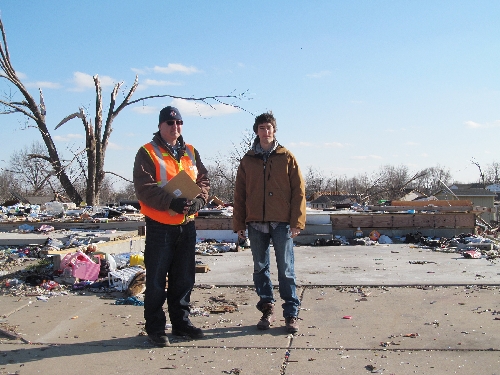
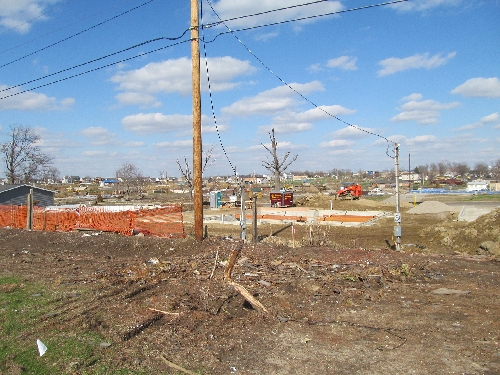
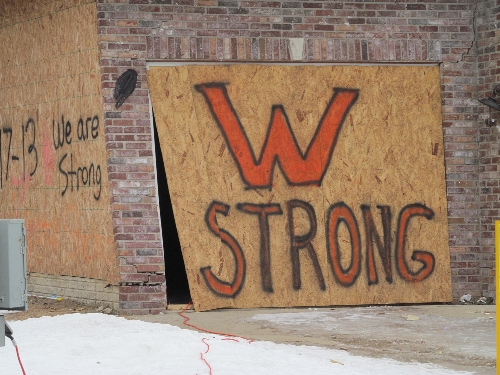
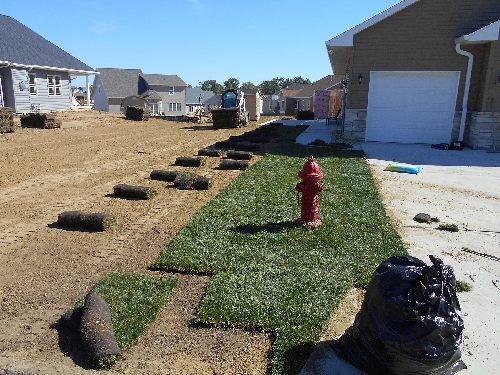
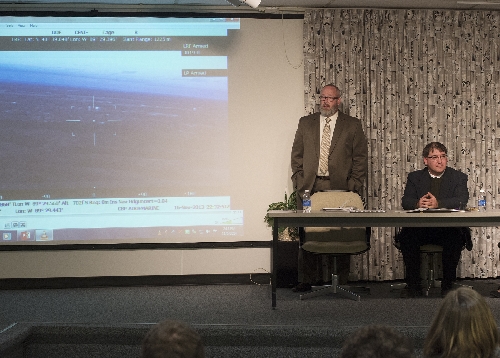
Connect with us: